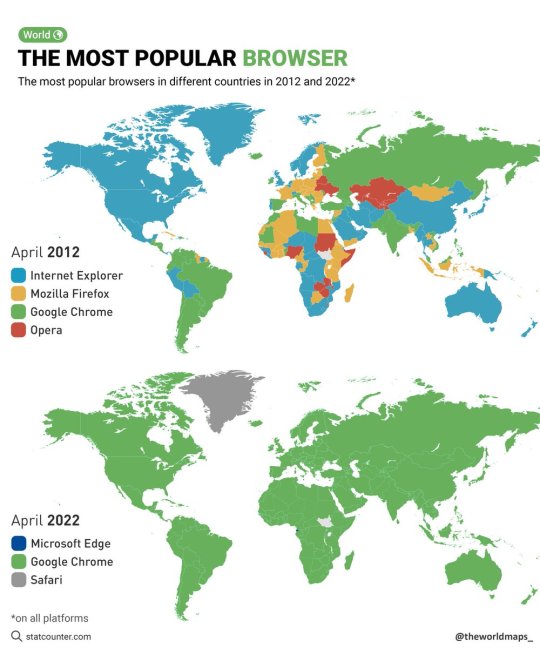#api design
Explore tagged Tumblr posts
Text
I miss being able to just use an API with `curl`.
Remember that? Remember how nice that was?
You just typed/pasted the URL, typed/piped any other content, and then it just prompted you to type your password. Done. That's it.
Now you need to log in with a browser, find some obscure settings page with API keys and generate a key. Paternalism demands that since some people insecurely store their password for automatic reuse, no one can ever API with a password.
Fine-grained permissions for the key? Hope you got it right the first time. You don't mind having a blocking decision point sprung on you, do ya? Of course not, you're a champ. Here's some docs to comb through.
That is, if the service actually offers API keys. If it requires OAuth, then haha, did you really think you can just make a key and use it? you fool, you unwashed barbarian simpleton.
No, first you'll need to file this form to register an App, and that will give you two keys, okay, and then you're going to take those keys, and - no, stop, stop trying to use the keys, imbecile - now you're going to write a tiny little program, nothing much, just spin up a web server and open a browser and make several API calls to handle the OAuth flow.
Okay, got all that? Excellent, now just run that program with the two keys you have, switch back to the browser, approve the authorization, and now you have two more keys, ain't that just great? You can tell it's more secure because the number of keys and manual steps is bigger.
And now, finally, you can use all four keys to make that API call you wanted. For now. That second pair of keys might expire later.
20 notes
·
View notes
Text
Explore These Exciting DSU Micro Project Ideas
Explore These Exciting DSU Micro Project Ideas Are you a student looking for an interesting micro project to work on? Developing small, self-contained projects is a great way to build your skills and showcase your abilities. At the Distributed Systems University (DSU), we offer a wide range of micro project topics that cover a variety of domains. In this blog post, we’ll explore some exciting DSU…
#3D modeling#agricultural domain knowledge#Android#API design#AR frameworks (ARKit#ARCore)#backend development#best micro project topics#BLOCKCHAIN#Blockchain architecture#Blockchain development#cloud functions#cloud integration#Computer vision#Cryptocurrency protocols#CRYPTOGRAPHY#CSS#data analysis#Data Mining#Data preprocessing#data structure micro project topics#Data Visualization#database integration#decentralized applications (dApps)#decentralized identity protocols#DEEP LEARNING#dialogue management#Distributed systems architecture#distributed systems design#dsu in project management
0 notes
Text

Moments before disaster.
The brothers, Osiris and Seth! They had a very competitive childhood but a tightknit friendship.
Once Osiris took over as pharoh, the relationship grew bitter as Seth caused problems for the kingdom in retaliation.
----------------
Figured I'd give some design facts about why Osiris is a bull! I was given information by @/milky-rozen about an aspect of Osiris being a bull and i found out about Apis, a bull diety god who is associated with osiris and bam! Also this is pre-dead Osiris lol
#ancient egypt#digital art#egyptian gods#character design#digital illustration#Seth#set#osiris#apis#apis bull
66 notes
·
View notes
Text
Hey but on the other hand maybe I wouldn't be so quick to blame the Tumblr API if it gave me more precise error information, you know?
Like would it kill you to at least include "bad tags: {{unambiguous representation of the tags as the API received them}}" in the error response?
mentalisttraceur don't get mad at someone else's software before it turns out the problem is in your own software challenge (impossible difficulty)
9 notes
·
View notes
Text

Albert Camus, (1957), La ghigliottina. Riflessioni sulla pena di morte, Translation by Maria Lilith, and Alfredo Rovatti, «Le api», Medusa Edizioni, Milano, 2018
#graphic design#essay#book#cover#book cover#albert camus#maria lilith#alfredo rovatti#le api#medusa edizioni#1950s#2010s
22 notes
·
View notes
Text
First Steps:
So I want to learn how to get access to the spotify api and my data first in my terminal. So I want to:
Get my top albums in terminal
Get my top artists in terminal
Get my top songs in terminal
If I figure it out really quick:
Add that json data into an xbar project on my Macbook
If that is easy then I'll add more stuff for when you click on xbar
#programmer#software engineering#software#code#coding#codeblr#website development#web developers#web design#baby coder#I know how to do nothing I just learned how to access APIs and make crude Ruby on Rails apps#ruby on rails#ruby
8 notes
·
View notes
Text
Woxro: The Bright Head in the Lead of Ecommerce Development
Woxro is one of the highest level e-commerce development companies in the constantly changing digital economy. Woxro assures cutting-edge solutions for businesses with the sophisticated requirement of today's digital economy. Whether it's about B2B and B2C platforms or the most seamless integration, or simply a custom-built solution, the online business experiences get ignited through Woxro's services. Backed with the attitude of innovation and commitment towards making their clients successful, Woxro helps companies make strong digital platforms along with competitive markets. Check out these are the core e-commerce development services by which Woxro comes forward to be a preferred partner for businesses wanting to breathe new life into their online presence. Woxro is the leading ecommerce development company in India and is providing top notch services and solutions for you.

B2B Platform Development
The B2B interaction is at the heart of modern commerce; it has built B2B platforms that make such interactions easy and hassle-free. B2B marketplaces help a company reach its suppliers, shortlist potential partnerships, and make the transactions all from one centralized place. Woxro's B2B platforms are wide-ranging and ensure that customers experience security, reliability, and ease of use in all business operations in order to create confidence and efficient workflows. Woxro's B2B solutions are equipped with real-time inventory management, automated processes, and advanced analytics, meaning businesses can work efficiently and have valuable relationships that last long.
B2C Platform Development
Through ease-of-use, online shops to offer products for shopping, Woxro's B2C platform development services help businesses reach their customers and interact directly with them. Designed to convert visitors into loyal customers, Woxro's B2C platforms include all the comprehensive tools for managing products, processing secure payments, and engaging in more personalized experiences for shopping. Each is optimized to give an easy, enjoyable experience to the user as businesses stretch their reach to the customer, marketing being directed, and giving an enjoyable shopping experience that creates a sale and brand loyalty.

Platform Migration
Moving out from the outdated systems to modern scalable platforms often marks the beginning for businesses that want to remain competitive. Woxro professionals successfully migrate complexly numerous business operations from less than the minimum level of disruption. Woxro takes cautious control of data migration, system configuration, and testing processes while making the move to become more distant in terms of on-premise systems to cloud infrastructure, updating legacy technology, or changing platforms. When businesses engage with Woxro, they embrace the latest technologies, realize cost savings on operations, and boost the performance of the system with business continuity and efficiency intact.
Custom-Designed Platform Development
Woxro realises that every business is unique and has custom platform development services that provide bespoke solutions for a specific goal or workflow in place. These platforms are off-the-shelf by definition, designed from the ground up to meet a precise business need. Woxro's custom solutions are scalable and adaptive, allowing businesses to implement proprietary features, streamline workflows, and maximize flexibility. About Woxro's customization innovation integration: It ensures that the platforms continue to grow with the business and, thus, become an excellent basis for long-term growth as well as a competitive edge in the market.
CMS Integration
The integration of a content management system with your e-commerce platform has vast benefits within the operation, ranging from effective product management to advanced SEO capabilities. Woxro's content management system integration services enable businesses to access a single, easy-to-use interface for managing product descriptions, optimizing search content for better search engine rankings, and personalising shopping experiences. CMS integration, therefore, promotes ease of updates while bringing increased online visibility and engagement from customers. CMS integration helps companies create more engaging and dynamic experiences that talk to customers to convert them.
API Integration
API integration is a necessary concept for e-commerce platforms in an interlinked digital world, integrating with third-party applications, payment systems, and other services. Woxro's API integration services provide smoother interoperability between different software applications for easy information sharing and add-on features. Of course, payment gateway, CRM system, and APIs all resolve issues because their performance can grow without getting disconcerting of existing operations, Woxro ensures that. API integration makes the overall functionality and responsiveness of e-commerce platforms robust, flexible, and scalable enough to expand on further expectations.
Why Woxro for ECommerce Development?
At Woxro, you will find industry expertise, innovative technology and, above all, a client-centric approach that seeks tailored solutions for each business. Ecommerce development with Woxro's services is done to cater for the unique needs of every client so as to ensure robust, scalable solutions adapting to changing market demands. Whether it is a B2B, B2C platform, handling platform migrations, or integration with CMS and APIs, Woxro connects with technical pools of expertise in alignment with strategic insight to yield results. Businesses partner with Woxro to achieve advanced tools and custom solutions in enforcing the new path forward through their digital success.

Conclusion
Woxro e-commerce development solutions give businesses the possibility of a powerful and agile web presence. The products offered by Woxro for creating B2C growth strengthen customer engagement, streamline B2B relations, smooth migrates, and unlock API and CMS integrations that facilitate business clients' digital transformation with the platform. Equipping businesses with solutions that solve the challenges of the digital age, creating future-proof, impact-generating e-commerce, to drive business growth and success-all of these Woxro does.
#ecommerce#ecommerce development agency#ecommerce development services#ecommerce development company#ecommerce website development#ecommerce developers#web developers#web development#web graphics#web resources#shopify#woocommerce#online store#smallbusiness#websitedevelopmentcompany#search engine optimization#web design#website design#web hosting#website#social media#content creation#content creator#cms development services#cms#b2b#b2bmarketing#api integration
5 notes
·
View notes
Text
Okay actually fuck it. Proving past me wrong
001 - Iris - purple emperor butterfly (apatura iris)

002 - Fallax - stick insect (achrioptera fallax)

003 - Tiluca - glowworm (lampyris noctiluca)

006 - Teralis - cordycepts (ophiocordycepts unilateralis)

007 - Api - hornet moth (sesia apiflora)

008 - Montei - leaf insect (phyllium monteithi)

009 - Color - painted grasshopper (dactylotum bicolor)

010 - Ciata - assassin bug (rhigana cruciata)

#FINALLY#not too happy with ciata's design . might change it later idk#entogram#entogram: iris#entogram: fallax#entogram: tiluca#entogram: teralis#entogram: api#entogram: montei#entogram: color#entogram: ciata#this doesn't include toby's ocs cuz i dont wanna steal them heart#and big shoutout to tolouse 4 desigining color
9 notes
·
View notes
Text
Why Large Language Models Skip Instructions and How to Address the Issue
New Post has been published on https://thedigitalinsider.com/why-large-language-models-skip-instructions-and-how-to-address-the-issue/
Why Large Language Models Skip Instructions and How to Address the Issue


Large Language Models (LLMs) have rapidly become indispensable Artificial Intelligence (AI) tools, powering applications from chatbots and content creation to coding assistance. Despite their impressive capabilities, a common challenge users face is that these models sometimes skip parts of the instructions they receive, especially when those instructions are lengthy or involve multiple steps. This skipping leads to incomplete or inaccurate outputs, which can cause confusion and erode trust in AI systems. Understanding why LLMs skip instructions and how to address this issue is essential for users who rely on these models for precise and reliable results.
Why Do LLMs Skip Instructions?
LLMs work by reading input text as a sequence of tokens. Tokens are the small pieces into which text is divided. The model processes these tokens one after another, from start to finish. This means that instructions at the beginning of the input tend to get more attention. Later instructions may receive less focus and can be ignored.
This happens because LLMs have a limited attention capacity. Attention is the mechanism models use to decide which input parts are essential when generating responses. When the input is short, attention works well. But attention becomes less as the input gets longer or instructions become complex. This weakens focus on later parts, causing skipping.
In addition, many instructions at once increase complexity. When instructions overlap or conflict, models may become confused. They might try to answer everything but produce vague or contradictory responses. This often results in missing some instructions.
LLMs also share some human-like limits. For example, humans can lose focus when reading long or repetitive texts. Similarly, LLMs can forget later instructions as they process more tokens. This loss of focus is part of the model’s design and limits.
Another reason is how LLMs are trained. They see many examples of simple instructions but fewer complex, multi-step ones. Because of this, models tend to prefer following simpler instructions that are more common in their training data. This bias makes them skip complex instructions. Also, token limits restrict the amount of input the model can process. When inputs exceed these limits, instructions beyond the limit are ignored.
Example: Suppose you give an LLM five instructions in a single prompt. The model may focus mainly on the first two instructions and partially or fully ignore the last three. This directly affects how the model processes tokens sequentially and its attention limitations.
How Well LLMs Manage Sequential Instructions Based on SIFo 2024 Findings
Recent studies have looked carefully at how well LLMs follow several instructions given one after another. One important study is the Sequential Instructions Following (SIFo) Benchmark 2024. This benchmark tests models on tasks that need step-by-step completion of instructions such as text modification, question answering, mathematics, and security rule-following. Each instruction in the sequence depends on the correct completion of the one before it. This approach helps check if the model has followed the whole sequence properly.
The results from SIFo show that even the best LLMs, like GPT-4 and Claude-3, often find it hard to finish all instructions correctly. This is especially true when the instructions are long or complicated. The research points out three main problems that LLMs face with following instructions:
Understanding: Fully grasping what each instruction means.
Reasoning: Linking several instructions together logically to keep the response clear.
Reliable Output: Producing complete and accurate answers, covering all instructions given.
Techniques such as prompt engineering and fine-tuning help improve how well models follow instructions. However, these methods do not completely help with the problem of skipping instructions. Using Reinforcement Learning with Human Feedback (RLHF) further improves the model’s ability to respond appropriately. Still, models have difficulty when instructions require many steps or are very complex.
The study also shows that LLMs work best when instructions are simple, clearly separated, and well-organized. When tasks need long reasoning chains or many steps, model accuracy drops. These findings help suggest better ways to use LLMs well and show the need for building stronger models that can truly follow instructions one after another.
Why LLMs Skip Instructions: Technical Challenges and Practical Considerations
LLMs may skip instructions due to several technical and practical factors rooted in how they process and encode input text.
Limited Attention Span and Information Dilution
LLMs rely on attention mechanisms to assign importance to different input parts. When prompts are concise, the model’s attention is focused and effective. However, as the prompt grows longer or more repetitive, attention becomes diluted, and later tokens or instructions receive less focus, increasing the likelihood that they will be overlooked. This phenomenon, known as information dilution, is especially problematic for instructions that appear late in a prompt. Additionally, models have fixed token limits (e.g., 2048 tokens); any text beyond this threshold is truncated and ignored, causing instructions at the end to be skipped entirely.
Output Complexity and Ambiguity
LLMs can struggle with outputting clear and complete responses when faced with multiple or conflicting instructions. The model may generate partial or vague answers to avoid contradictions or confusion, effectively omitting some instructions. Ambiguity in how instructions are phrased also poses challenges: unclear or imprecise prompts make it difficult for the model to determine the intended actions, raising the risk of skipping or misinterpreting parts of the input.
Prompt Design and Formatting Sensitivity
The structure and phrasing of prompts also play a critical role in instruction-following. Research shows that even small changes in how instructions are written or formatted can significantly impact whether the model adheres to them.
Poorly structured prompts, lacking clear separation, bullet points, or numbering, make it harder for the model to distinguish between steps, increasing the chance of merging or omitting instructions. The model’s internal representation of the prompt is highly sensitive to these variations, which explains why prompt engineering (rephrasing or restructuring prompts) can substantially improve instruction adherence, even if the underlying content remains the same.
How to Fix Instruction Skipping in LLMs
Improving the ability of LLMs to follow instructions accurately is essential for producing reliable and precise results. The following best practices should be considered to minimize instruction skipping and enhance the quality of AI-generated responses:
Tasks Should Be Broken Down into Smaller Parts
Long or multi-step prompts should be divided into smaller, more focused segments. Providing one or two instructions at a time allows the model to maintain better attention and reduces the likelihood of missing any steps.
Example
Instead of combining all instructions into a single prompt, such as, “Summarize the text, list the main points, suggest improvements, and translate it to French,” each instruction should be presented separately or in smaller groups.
Instructions Should Be Formatted Using Numbered Lists or Bullet Points
Organizing instructions with explicit formatting, such as numbered lists or bullet points, helps indicate that each item is an individual task. This clarity increases the chances that the response will address all instructions.
Example
Summarize the following text.
List the main points.
Suggest improvements.
Such formatting provides visual cues that assist the model in recognizing and separating distinct tasks within a prompt.
Instructions Should Be Explicit and Unambiguous
It is essential that instructions clearly state the requirement to complete every step. Ambiguous or vague language should be avoided. The prompt should explicitly indicate that no steps may be skipped.
Example
“Please complete all three tasks below. Skipping any steps is not acceptable.”
Direct statements like this reduce confusion and encourage the model to provide complete answers.
Separate Prompts Should Be Used for High-Stakes or Critical Tasks
Each instruction should be submitted as an individual prompt for tasks where accuracy and completeness are critical. Although this approach may increase interaction time, it significantly improves the likelihood of obtaining complete and precise outputs. This method ensures the model focuses entirely on one task at a time, reducing the risk of missed instructions.
Advanced Strategies to Balance Completeness and Efficiency
Waiting for a response after every single instruction can be time-consuming for users. To improve efficiency while maintaining clarity and reducing skipped instructions, the following advanced prompting techniques may be effective:
Batch Instructions with Clear Formatting and Explicit Labels
Multiple related instructions can be combined into a single prompt, but each should be separated using numbering or headings. The prompt should also instruct the model to respond to all instructions entirely and in order.
Example Prompt
Please complete all the following tasks carefully without skipping any:
Summarize the text below.
List the main points from your summary.
Suggest improvements based on the main points.
Translate the improved text into French.
Chain-of-Thought Style Prompts
Chain-of-thought prompting guides the model to reason through each task step before providing an answer. Encouraging the model to process instructions sequentially within a single response helps ensure that no steps are overlooked, reducing the chance of skipping instructions and improving completeness.
Example Prompt
Read the text below and do the following tasks in order. Show your work clearly:
Summarize the text.
Identify the main points from your summary.
Suggest improvements to the text.
Translate the improved text into French.
Please answer all tasks fully and separately in one reply.
Add Completion Instructions and Reminders
Explicitly remind the model to:
“Answer every task completely.”
“Do not skip any instruction.”
“Separate your answers clearly.”
Such reminders help the model focus on completeness when multiple instructions are combined.
Different Models and Parameter Settings Should Be Tested
Not all LLMs perform equally in following multiple instructions. It is advisable to evaluate various models to identify those that excel in multi-step tasks. Additionally, adjusting parameters such as temperature, maximum tokens, and system prompts may further improve the focus and completeness of responses. Testing these settings helps tailor the model behavior to the specific task requirements.
Fine-Tuning Models and Utilizing External Tools Should Be Considered
Models should be fine-tuned on datasets that include multi-step or sequential instructions to improve their adherence to complex prompts. Techniques such as RLHF can further enhance instruction following.
For advanced use cases, integration of external tools such as APIs, task-specific plugins, or Retrieval Augmented Generation (RAG) systems may provide additional context and control, thereby improving the reliability and accuracy of outputs.
The Bottom Line
LLMs are powerful tools but can skip instructions when prompts are long or complex. This happens because of how they read input and focus their attention. Instructions should be clear, simple, and well-organized for better and more reliable results. Breaking tasks into smaller parts, using lists, and giving direct instructions help models follow steps fully.
Separate prompts can improve accuracy for critical tasks, though they take more time. Moreover, advanced prompt methods like chain-of-thought and clear formatting help balance speed and precision. Furthermore, testing different models and fine-tuning can also improve results. These ideas will help users get consistent, complete answers and make AI tools more useful in real work.
#2024#ADD#ai#AI systems#ai tools#APIs#applications#approach#artificial#Artificial Intelligence#attention#Behavior#benchmark#Bias#Building#challenge#chatbots#claude#coding#complexity#Conflict#content#content creation#data#datasets#Design#efficiency#engineering#excel#focus
1 note
·
View note
Text
#best it consulting companies#It companies near me#Software Company in Durg Bhilai Chhattisgarh#ui & ux designer & developer#Digital marketing companies near me#Top digital marketing companies Durg#Third party api integration Services in durg#API development and integration#Mobile application development Services#Mobile software development company Durg#Web development company Bhilai#Best website development company Durg
2 notes
·
View notes
Text
and when i say down with spotify
#used to love and idolize spotify but they’ve gone so downhill#their greed is showing#this isn’t even about wrapped#THOUSANDS of people are still reeling from them revoking access to audio features through their API#months and for some years of work gone#me included#and then#this wrapped has NO advanced analyses. literally I COULD MAKE this wrapped if i wanted to#where is the innovation? where is the insight ??#they laid off a shit ton of workers and are suprised when ppl don’t enjoy their bare bones minimum ass wrapped#pisses me off.#they def revoked audio featured access because they knew independent projects were better than whatever tf this was#sunny yaps#but hey what do i know#god i keep have thoughts and editing the tags LOL but literally other companies that copied the “wrapped concept still did better than them#like this is disappointing#you are an a titan in industry of music steaming and design and this was just lack luster overall#it seems rushed even though it’s late#and if you are going to champion data and personalization as ur main brand DO IT RIGHT. they were so good in the past idk but#the whole audio features thing AND the mid wrapped pissed me tf off#ok sorry i’ll stop rambling in here lol
4 notes
·
View notes
Text
It really is very frustrating to try to use Tumblr through the API, because:
First you have to Register An App, even though I am a user, I am trying to just automate some workflows, I am not an App Developer making a third-party integration for others.
Then you must use OAuth. Having an API where the only authentication mechanism is OAuth should be a crime. OAuth is an okay solution for letting third-party code get credentials on behalf of users with user consent. But I am not third-party code!!! I am me, the user; my code is an extension of me, it is me, alkfsdafklsdalfsalf!
Randomly things will just fail to post. You will be told the profoundly helpful status 400, code 8001, which if we go by observation alone are the only possible numbers, and mean any possible error. "Posting failed. Please try again." Incidentally, if you are ever responsible for a "Please try again" error message for something that is not a transient error but will persistently reliably fail, we need to break out the medieval corporal punishments. Flogging. Stocks. Those little cages on street posts. And responsibility goes up the chain of command - the higher the position, the longer the punishment.
This. This will be the thing that finally drives me off Tumblr. No amount of adoring Tumblr fans will keep me if I can't reliably publish posts from the comfort of my text editor.
31 notes
·
View notes
Text

Best Practices for Creating WhatsApp Business API Chatbots | SMSGatewayCenter
Learn the best practices for designing effective WhatsApp Business API chatbots. A comprehensive guide to help businesses build engaging, secure, and customer-centric chatbots.
#WhatsApp Business API#chatbot design#best practices#WhatsApp chatbots#AI-powered chatbots#business communication#WhatsApp automation#customer service chatbot#interactive chatbots#secure chatbots
3 notes
·
View notes
Text
9 AI Tools to Build Websites and Landing Pages: Revolutionizing Web Design

In the ever-evolving world of web design, staying ahead of the curve is essential to creating visually stunning and highly functional websites. With the advent of artificial intelligence (AI), designers and developers now have a powerful set of tools at their disposal to revolutionize the web design process. AI website design tools offer innovative solutions that streamline and enhance the creation of websites and landing pages.
In this article, we will explore nine AI tools that are reshaping the web design landscape, discuss their various types, and highlight the benefits of using AI tools for website building.
1. Wix ADI:
Wix ADI (Artificial Design Intelligence) is a game-changer for website building. It utilizes AI algorithms to automatically generate customized website designs based on user preferences and content inputs. With Wix ADI, even users with no design experience can create stunning websites in a matter of minutes.
2. Grid:
Grid is an AI-powered website builder that uses machine learning to analyze design principles and create visually pleasing websites. It takes user inputs, such as branding elements and content, and generates unique layouts and designs tailored to the user's needs. Grid eliminates the need for manual coding and design expertise, making it accessible to users of all skill levels.
3. Firedrop:
Firedrop is an AI chatbot-based website builder that guides users through the entire website creation process. The AI-driven chatbot asks questions, gathers information, and generates a personalized website design. It also offers real-time editing and customization options, allowing users to make changes effortlessly.
4. Bookmark:
Bookmark is an AI website builder that combines artificial intelligence with human assistance. It provides an intuitive interface where users can select a design style and content preferences. The AI algorithms then generate a website layout, which can be further customized using Bookmark's drag-and-drop editor. Users also have access to AI-driven features like automated content creation and personalized marketing recommendations.
5. Adobe Sensei:
Adobe Sensei is an AI and machine learning platform that enhances the capabilities of Adobe's creative tools, including website design software like Adobe XD. Sensei analyzes user behavior, content, and design elements to offer intelligent suggestions, automate repetitive tasks, and speed up the design process. It empowers designers to create impactful websites with greater efficiency and creativity.
6. The Grid:
The Grid is an AI-driven website builder that uses machine learning to analyze user content and generate unique, responsive website designs. It employs a card-based layout system, automatically arranging and resizing content for optimal visual appeal. The Grid's AI algorithms continuously learn from user feedback, improving the quality of designs over time.
7. Elementor:
Elementor is a popular AI-powered plugin for WordPress that simplifies the process of building landing pages. It offers a drag-and-drop interface with a wide range of pre-designed templates and widgets. Elementor's AI features include responsive editing, dynamic content integration, and intelligent design suggestions, enabling users to create professional landing pages efficiently.
8. Canva:
Although primarily known as a graphic design tool, Canva incorporates AI elements to make website design accessible to non-designers. It offers a user-friendly interface with customizable templates, stock images, and drag-and-drop functionality. Canvas AI algorithms suggest design elements and provide automatic resizing options, making it easier to create visually appealing websites and landing pages.
9. Sketch2React:
Sketch2React is an AI tool that simplifies the process of converting design files from Sketch (a popular design software) into interactive, code-based websites. It automates the conversion process, reducing the need for manual coding and accelerating the development timeline. Sketch2React's AI capabilities ensure that the resulting websites are responsive and optimized for different devices.
Benefits of Using AI Tools for Website Development:
1. Time-saving: AI tools automate repetitive and time-consuming tasks, allowing designers and developers to focus on creativity and strategic aspects of web design.
2. Cost-effective: AI tools eliminate the need for extensive coding knowledge or hiring professional designers, making website building more affordable for businesses of all sizes.
3. User-friendly: AI website builders provide intuitive interfaces, drag-and-drop functionality, and automated design suggestions, making them accessible to users with limited technical skills.
4. Personalization: AI algorithms analyze user preferences and content inputs to generate personalized website designs that align with the brand and target audience.
5. Enhanced creativity: AI tools offer design suggestions, templates, and automated content creation features that inspire creativity and enable designers to experiment with new ideas.
6. Improved user experience: AI-driven websites are optimized for responsiveness, usability, and accessibility, resulting in enhanced user experiences and increased engagement.
Conclusion:
AI tools have revolutionized the web design industry by simplifying and enhancing the process of building websites and landing pages. Whether it's generating personalized designs, automating repetitive tasks, or offering intelligent design suggestions, AI-driven solutions empower designers and non-designers alike to create visually stunning and highly functional websites. By leveraging the power of AI, businesses can save time, reduce costs, and deliver exceptional user experiences, ultimately driving success in the digital landscape. As AI technology continues to advance, we can expect even more innovative tools to emerge, further revolutionizing the field of web design. Embracing these AI tools is key to staying at the forefront of web design trends and creating websites that captivate audiences and achieve business goals.
#Hire Machine Learning Developer#Machine Learning Development in India#Looking For Machine Learning Developer#Looking For Machine Learning Dev Team#Data Analytics Company#Vision AI Solution#Vision AI Development#Vision AI Software#Vision API#Vertex AI Vision#Web Development#Web Design#AI Tool
2 notes
·
View notes
Text

Acemero is a company that strives for excellence and is goal-oriented. We assist both businesses and individuals in developing mobile and web applications for their business.
Our Services include:
Web/UI/UX Design
CMS Development
E-Commerce Website
Mobile Apps
Digital Marketing
Branding
Domain & Hosting
API Integration
Our Products include :
Support Ticket System
Direct Selling Software
Learning Management System
Auditing Software
HYIP Software
E-Commerce Software
#Mobosoftware#software development#software developers#web development#cms web development services#cms website development company#cms#mlm software#hyip#ecommerce software#lms#audit software#API Integration#Branding#Digital Marketing#ui/ux design
2 notes
·
View notes
Photo
Chrome on mobile doesn't allow add ons. If something didn't change, Kiwi is the only chrome-based browser with add on support. Firefox on mobile allows add ons (it's a small collectionbto chose from but the most important add ons are supported)
And what is possibly the most important in this day and age: Firefox implememts the security and safety features from Tor browser.

The most popular browsers in different countries in 2012 and 2022.
by @theworldmaps_
#firefox#i always have old hardware#and chome was crashing or getting stuck with a handfull of open tabs#meanwhile firefox handled dozens and hundreds of open tabs and even several windows less issues#I am really unhappy with many of firefox's design choices starting with locking out session managers fromthe needed apis#or not working with add on developpers pre deprecating of old add on ecosystem#or taking away user choices#or the awesomebar. oh my god. and the way the switches for the search and adress bars work#and turning into a chrome clone re the user interface amd experience#(the code is a bit of a mess by now too apparently.)#but I still have so many more choices than with chrome
163K notes
·
View notes